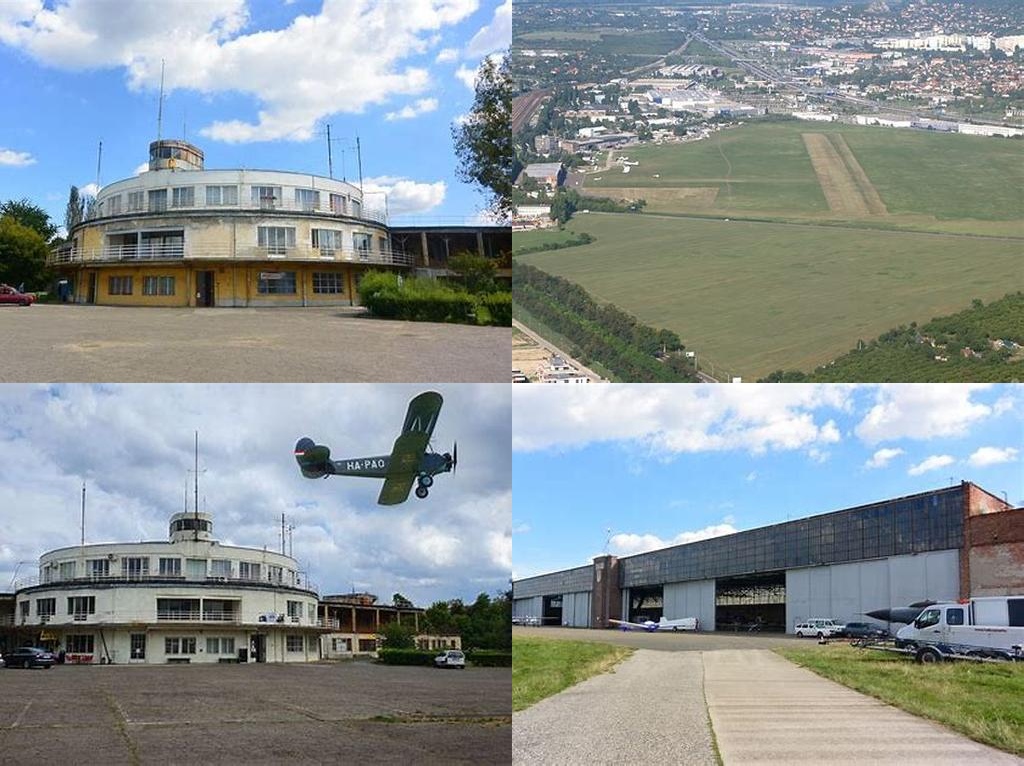
Budaörsi repülőtér (that’s Budaörs Airport in English), may look unassuming from the main road, but step onto its grounds and you’ll find an open-air museum of Hungarian aviation, full of stories and oddities. Situated just on the western fringe of Budapest, this airfield quietly carries the distinction of being Hungary’s oldest still-operational airport. Opened in 1937, back when air travel was an exciting and glamorous novelty, the airport quickly established itself as the beating heart of civil aviation in Hungary. Today, it’s a tranquil pocket of retro charm, still alive with the buzz of small planes, aviation enthusiasts, and a kind of golden-era nostalgia that’s increasingly rare to find.
Wander around, and you’re greeted by the graceful curves of the main terminal building—a distinctive example of Art Deco architecture. It was designed by Virgil Bierbauer, a prominent architect of the era, whose vision gave the airport an unmistakable look, blending modernist style with practical function. The sweeping windows, soft geometric shapes, and carefully designed proportions were meant to convey a sense of optimism and dynamism that defined the late 1930s. Even today, the building stands as an architectural time capsule—photographers and history buffs alike enjoy exploring its preserved details and imagining the days when newspaper boys announced flights, passengers strolled in pressed linen suits, and propeller aircraft lined up just outside.
But Budaörs Airport is by no means just a relic. While the massive jets and commercial traffic now operate out of Budapest Ferenc Liszt International Airport, Budaörs has reemerged as a lively hub for general aviation, flight training, vintage aircraft, and small-scale air shows. On any sunny weekend, the runways come to life with gliders, Cessnas, and meticulously restored biplanes, some of which date nearly as far back as the airport itself. Members of Hungary’s various flying clubs—many of which have deep roots in the airport’s history—gather here to share tips, swap stories, and keep the legacy of Hungarian civil aviation alive. The atmosphere is informal and welcoming; it’s easy to strike up a conversation with a pilot tinkering with their engine or watching takeoffs from the grassy apron.
Events at Budaörsi repülőtér are quietly spectacular without any of the fuss you might expect at a big international show. The annual Gold Timer Foundation fly-in is a highlight: this organization, based at the airfield, restores vintage Hungarian aircraft. During the fly-in, the field is dotted with planes from bygone eras—aviation fans can get up close, chat with the restorers, and even book a flight in a classic Liszunov Li-2 or Polikarpov Po-2. There are also model plane demonstrations, tandem parachute jumps, and the sort of easygoing fun that makes for a perfect family outing or a low-key adventure for solo travelers. The grass runway, open sky, and the onion-domed skyline of Budaörs in the background lend the place a certain magic; it feels suspended somewhere between the past and present.
Food and drink? The on-site bistro is delightfully old school—think hearty Hungarian snacks, fizzy sodas, and good coffee, all enjoyed at outdoor tables next to the action. There’s nothing quite like lingering over a cold drink while watching gliders get hauled into the air with a cable or soaking in the sound of the wind and propellers. You’ll likely catch sight of aviation students on their first solo flights, their excitement absolutely infectious, or local history buffs giving informal tours of the site’s most notable aircraft.
Visiting Budaörsi repülőtér is something different from the usual city sightseeing spots. It’s history you can touch, and a living community that welcomes curious strangers. Although just a short ride from the bustle of downtown Budapest, a few hours here offers a genuine window into Hungary’s unique aviation culture, a slower pace, and a sense of open possibility. Whether you’re an aviation aficionado, a photography lover, or just someone in search of an offbeat adventure, the airport’s lingering echoes of the 1930s—and its ongoing commitment to the spirit of flight—make it one of the city’s most quietly rewarding discoveries.





